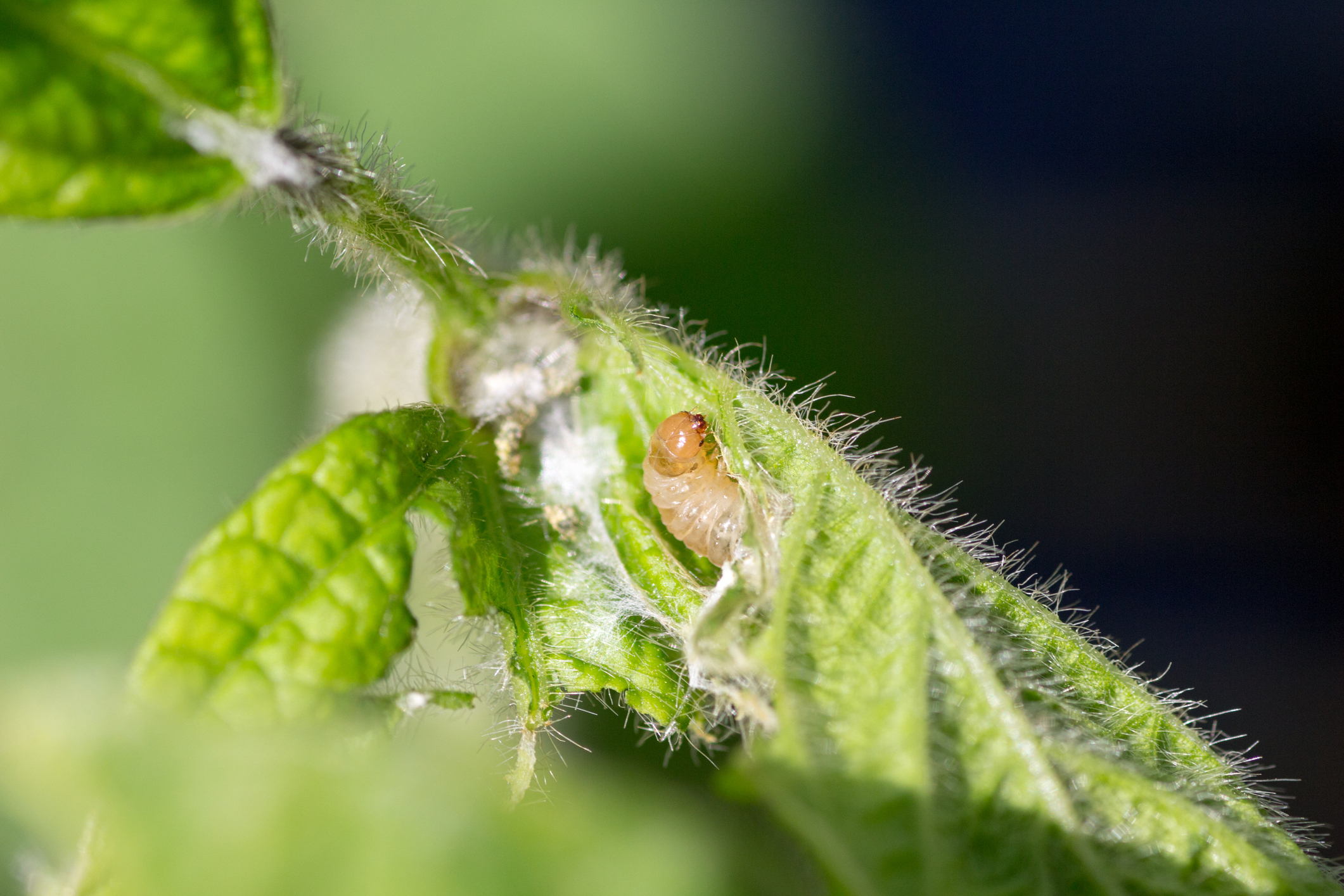Soybean gall midge, a relatively new pest in the US agricultural landscape, poses significant risks to soybean crops across multiple states. Emerging about ten days earlier than expected this season, this insect’s presence is particularly concerning due to its ability to cause extensive damage to soybean yields.
The soybean gall midge was initially detected in 2019 in Missouri and has since been confirmed across 164 counties in seven states. The infestation expanded into eight additional counties in 2023 alone. And the impact of these pests is significant. Yield losses due to soybean gall midge infestations range from 17% to 31%, with plants potentially dying within 21 days in high-pressure situations.
Lifecycle and Identification of Soybean Gall Midge
The lifecycle of the soybean gall midge begins when females lay eggs at the base of soybean plants. The emerging larvae then burrow into the stems. Early larvae stages are small and translucent, growing into bright orange in later stages. After their development, these larvae overwinter in the soil, emerging as adults the following summer, typically around early- to mid-June.
Further complicating the problem is that adult soybean gall midges are tiny and 1/4 inch long. So, while they have distinctive black-and-white striped legs, orange abdomens, and mottled wings, adults can be difficult to spot in fields.
Scouting and Management Strategies
The best time to begin scouting for gall midges is after soybean plants reach the V2 growth stage. Farmers should look for dark discolorations at the stem base and peel back affected areas to check for larvae. Due to the severity of the attack, infested plants often wilt and die. Plant injury is most severe at field edges, particularly those near dense vegetation or previous year's soybean crops.
Effective management practices include delaying soybean planting until after June and rotating crops to prevent recurring infestations. Research has shown mixed results with seed treatments and foliar fungicides. However, a degree of success has been reported with soil hilling around plants to reduce larval populations.
Recommendations for Farmers
To mitigate the impact of soybean gall midge, experts recommend several strategies:
Additionally, it is crucial to consult local extension agronomists if soybean gall midges are suspected. Scouting after events like hailstorms is also essential because the damage can provide entry points for pests and diseases.
As the soybean gall midge continues to spread, staying informed and adopting recommended management practices will be key for farmers as they work to protect their crops and livelihoods from this destructive pest. If you’re looking for products and agricultural equipment to help fight gall midge, a local John Deere dealer can help with all your pest mitigation needs.
